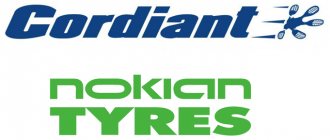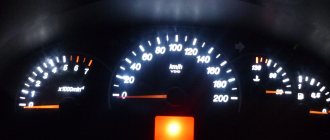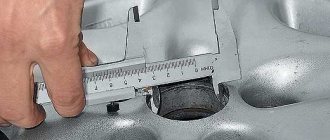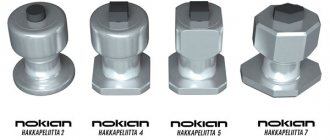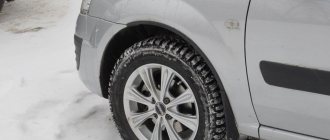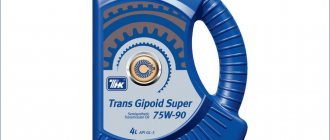Winter tires for Priora
The manufacturer installs tires on the Lada Priora in the following sizes:
"Lada Priora"
- 175/70 R13 82T;
- 175/65 R14 82Н;
- 185/60 R14 82Н;
- 185/65 R14 86H;
- 185/55 R15 82H.
These tires are also installed in this size, and also, in accordance with the operating instructions for this vehicle, are acceptable for installation on all modifications of tires in the following sizes:
- 175/70 R13 82T;
- 175/65 R14 82Н;
- 185/60 R14 82Н;
- 185/65 R14 86H;
- 185/55 R15 82H.
And on the Lada Priora Sedan Sport, the manufacturer allows installation of 195/55 R15, 195/50 R16, 205/45 R17.
About tires on Lada Priora cars of 14 and 15 diameters
The sizes 14 and 15 inches are rightfully the most common for installation on the Lada Priora. The manufacturer clearly states the permissible tire sizes. This:
- 175/65 R14 82Н;
- 185/60 R14 82Н;
- 185/65 R14 86H;
- 185/55 R15 82H.
In addition, wheels with the following dimensions are also suitable:
- 175/70 R13 82T;
- 175/65 R14 82Н;
- 185/60 R14 82Н;
- 185/65 R14 86H;
- 185/55 R15 82H.
The choice of size for a personal vehicle depends only on the preferences of the car owner. Different tires may provide different characteristics; to obtain the optimal one, you must take into account all the manufacturer's recommendations. For tuning, Priora can even be equipped with wheels with a diameter of 17 inches. They do not have a high level of smoothness, but they noticeably decorate the car.
The size of tires and wheels significantly affects how a car behaves on the road. Each manufacturer indicates the acceptable sizes of tires and wheels; as a rule, this list is limited to several options. We'll tell you what other tires and wheels are suitable for the Priora besides the factory ones and how this will affect the operation of the car.
Features of tires for driving in winter
Tires for driving in the winter season, due to weather and natural conditions, require certain differences from summer and all-season tires. They should more effectively remove water, snow, slush, ice and snow chips that are present on winter roads. In addition, winter tires should show better grip on the road surface, not slip on ice, icy roads and should not freeze. Therefore, winter tires have a number of design features.
Winter wheels on Priora
How are they different from summer ones?
Unlike summer tires, winter tires have the following features:
- A special rubber composition allows it to remain soft in severe frosts. This is especially true for friction tires that adhere to the road surface by adhesion. Silica is added to the composition of winter tires, the composition is constantly being improved so that the tires can withstand maximum sub-zero temperatures.
- Rubber must be soft, elastic and durable, because in winter there is a high risk of damage from pieces of ice, hard snow, and icy roadsides. Strength is also achieved by improving the rubber composition, adding silicic acid to it, as well as increasing the strength of the side tread blocks. An important point is the controllability of the car on slippery roads. It is achieved thanks to the course longitudinal ribs of the tread.
- To remove the abundant water on the roads and snow porridge in winter, winter tires have an increased level of siping and a greater depth of grooves. The deep tread pattern also helps tires self-clean from snow and slush.
- For better grip on the road and especially on icy surfaces, many winter tires are equipped with metal studs, which provide good grip and braking, but are quite noisy.
Summer and winter
Each season means the installation of special tires that have the necessary properties for each season.
It will be useful: How to make an electronic lambda probe
In summer, it is necessary to maintain the hardness of the rubber and resistance to high temperatures. Therefore, summer tires are radically different from winter tires on Priora.
There are varieties of summer tires - some are designed for wet asphalt conditions, or vice versa - they have protection against aquaplaning. What to install is up to the owner to decide.
Winter tires must be flexible and resistant to low temperatures. They should have deep slats for quick self-cleaning and perform well on winter surfaces.
On the Priora, it is best to choose studded tires - the most suitable for driving on snow and ice.
Which winter tires are best to choose for a Lada Priora?
Owners of Lada Priora cars for installation of winter tires select products from a number of cars that are best suited for installation on the wheels of their cars in winter. The main criteria for this choice:
- reliability;
- good course quality;
- efficient drainage;
- good grip on the road surface;
- short braking distance.
Priora on the road
Popular manufacturers
Prior owners primarily highlight tires from the following manufacturers:
- Matador - a good example would be the Matador MP92 Sibir Snow 195/55 R15 85T, a friction type with good driving performance and a price starting from 4,000 rubles* per unit.
- Goodyear, an example would be the quiet friction Goodyear UltraGrip 9 with good grip and controllability, costing from 4,000 rubles per unit.
- Br >Tire size for winter on Priora
The tire height to width ratio should be 60-65%. This ratio allows you to soften the passage of bumps on the road, significantly reduce the risk of tire puncture and helps ensure good handling of the Priora. The Lada Priora tire is marked with a speed index “H” (210 km/h) and a load index of at least 82 (475 kg).
Winter tires for Priora, which ones are better to choose?
14 or 15 diameter: which one is better?
The question of which winter tires for the Priora would be better to choose - R14 or R15 - is often relevant for owners of this model. On the one hand, the manufacturer recommends installing tires with clearly defined parameters - tire width 175-185 mm, profile height - 60-65 mm, wheel diameter - R14. But meanwhile, many Lada Priora owners put tires with a mounting diameter of R15 on the wheels of their car. Moreover, often when installing tires with a diameter larger than the recommended one, friction between the wheels and the body can occur, which in turn leads to rapid wear of the tires. In this case, you need to strictly follow the recommendations for the standard sizes allowed for installation on the Priora. Acceptable sizes are considered to be in the range from 175/60 R14 to 205/32 R15. Large sizes can lead to friction and tire wear.
For the city, 14-diameter winter tires are quite suitable for the Priora.
In other words, the choice is individual and depends on the driver’s preferences and the roads on which he will drive.
Priora on the highway in winter
When choosing winter tires for the Lada Priora, it is important to choose the appropriate size and select their characteristics to suit the requirements and roads on which the car will be driven. It should be remembered that the correct choice of winter tires is the key to successful car control on dangerous winter Russian roads.
*Prices are current as of February 2020.
We are testing eleven sets of summer tires of size 185/60R14 for Lada cars and other compact cars. Speed index - T (190 km/h) and H (210 km/h).
What does the size of tires and wheels affect?
| All modifications | |
| All modifications | 35 |
Increasing disc diameter
| Increasing rim width | Increasing tire width | ||
| Car style | will improve | will improve | will improve |
| Road holding | will improve | will improve | will improve |
| Steering precision | will improve | will improve | will improve |
| Tire grip | Will not change | Will not change | will improve, but only on dry roads |
| Resistance to hydroplaning | Will not change | Will not change | will get worse |
| Comfort on rough roads | will get worse | Will not change | will improve |
| Road noise | Will not change | Will not change | will intensify |
| Gasoline consumption | Will not change | will increase | will increase |
| Tire wear | Will not change | Will not change | will increase |
Have you decided to choose winter tires for your Lada Priora? For winter it is recommended to choose narrow tires. The fact is that with such tires the pressure on the road surface will be greater, and therefore the grip on the road will improve. Wide tires are more sensitive to ruts in winter. Low-profile tires perfectly transfer even the smallest pits to the fifth point.
The smaller the unsprung masses
(this includes a lot of tires and wheels), the better the car will hold the road and accelerate faster. For example, if you put wheels on a car that are 2 kg lighter each, then acceleration to 100 km/h will be reduced by 0.2 seconds.
In conclusion, we present statistics that were compiled based on a survey that took place among Lada Priora owners. Results of the survey “What size are the rims on your Lada Priora?” the following:
- 35% voted for R15 wheels.
- R14 wheels received 26% of the votes.
- For R16 wheels – 22%
- 12% of owners drive on low-profile R17 tires.
- Exclusive R18 wheels were installed on 4% of survey participants.
- The rarest R13 wheels are owned by 1% of owners.
Let us remind you that for safety and to increase the service life of your tires, you should maintain the recommended pressure in the Lada Priora tires. Read other articles on tuning Lada Priora, easy search by content.
Reading time: 5 minutes
Choosing winter tires for the wheels of your car is an extremely important and responsible task for every car owner. Car handling, ride comfort, and, most importantly, road safety depend on the right choice of tires. This article will talk about choosing winter tires for the popular domestic small-class car Lada Priora.
FIRST LINE
Let's start with the most expensive ones. ContiPremiumContact 5 tires sell for 2,655 rubles apiece. Not cheap! As if justifying the price, they took first place with 927 points. Among the main advantages are the high speed at the changeover and a short braking distance: a meter less than its nearest competitor when slowing down on wet asphalt from a speed of 80 km/h and as much as 3 meters less when braking in dry conditions from 100 km/h.
Nokian Hakka Green goes for 2380 rubles . Born in Finland, made in Russia. Fresh tire: in terms of development and market launch time, comparable to the ContiPremiumContact 5 model. The “green” tire scored 926 points, losing only one point to Conti. A good product. Moreover, the Hakka is balanced differently than the Conti: a car on such tires has clearer behavior during extreme maneuvering and high directional stability at high speed, as well as good feedback.
The Bridgestone Ecopia EP150 is new to us, although this model has been in the manufacturer’s lineup for several years. Price - 2370 rubles. For her 11th place (835 points) in our test, this is too much! Ecopia EP150 demonstrates the weakest “grip” when braking: the difference with the leader is almost 4 meters on wet asphalt and almost 5 on dry. This is the length of the Priora!
It’s better to forget about quick lane changes: quick maneuvers will backfire – in the literal sense of the word. The only bonus is modest fuel consumption in suburban mode. Perhaps the reason for the failure lies in the place of production? These tires came from Thailand, and tires labeled Made in Japan always performed better.
What is the tire pressure
The consequences of too high or too low tire pressure are serious - it is necessary to operate the car with well-inflated tires. Regardless of the load, rubber used and diameter, the nominal pressure is considered to be 0.2 MPa. The width of the rim (5J, 5 ½, 6J) does not matter.
Using tire pressures above the minimum has the following consequences:
- quick grinding of the central part of the tire;
- poor handling;
- There is a high risk of the wheel exploding.
Moreover, if a tire bursts while you are not driving, this can lead to extremely unpleasant consequences. For example, if the front wheel on the driver's side fails, the car may drift into the oncoming lane. Which will lead to a serious accident. Tire pressure should be checked before each trip. It is best to use a special device for this - a pressure gauge. It can be mechanical or electronic.
Many owners specially inflate tires to 1.7-1.8 atm. The main reason is greater ride comfort - thanks to the low pressure, shocks to the suspension are practically not transmitted to the passenger compartment and to the steering wheel. However, low tire pressure causes:
- rapid wear of the tread - it wears down at the edges an order of magnitude faster;
- increased fuel consumption - for every 100 km of travel, gasoline is consumed by 5-15% more.
Operating a vehicle with half-flat tires is dangerous. It is advisable to avoid such practices.
MODESTY IS NOT A VICE
In the line of more modest tires, like the top row, there are also weaklings that they strive to sell at a higher price, and vice versa.
For the Japanese new Toyo Proxes CF2 they ask 2180 rubles. And she scored 907 points in our test and took a respectable third place. Tires with good braking properties also provide the possibility of confident extreme maneuvering - just like the Nokian Hakka Green model. You will only have to sacrifice comfort: the tire cannot be called soft and quiet.
BFGoodrich g‑Grip tires with Michelin pedigree are sold for 2165 rubles. That’s why, apparently, they sell at a higher price, despite the “slower” speed index T (190 km/h). There are no obvious failures, but in all respects this tire falls slightly short of the average level. In our tests it takes only seventh position, with 870 points.
Formula Energy model , developed by Pirelli, sells for 2,150 rubles. But this tire cannot be tied to a racing formula; it cannot be called energetic: it is not suitable for extreme maneuvering. To keep the car in turns, extraordinary skill will be required from the driver. Although on a straight line the tires hold the car well even at high speed. The result was 876 points and eighth place with domestic Cordiant tires.
Hankook Kinergy Eco tire (2,135 rubles per piece) has average characteristics. There are no failures, but there are no ups either. Nevertheless, based on the totality of all indicators, she scored 888 points and took sixth place.
Russian Cordiant is sold for 2135 rubles. In terms of characteristics, the Road Runner model is close to the Formula Energy tire: it is inferior to it in course clarity and comfort, but provides more distinct handling in extreme conditions. 867 points, eighth place in the rating.
Tires for different driving styles and conditions
There are simply no universal models of tires that would fully suit all driving styles and characteristics. Therefore, the different driving styles of Priora owners require equipping the car with tires with different performance and technical characteristics.
Supporters of an aggressive driving style, when purchasing wide high-speed tires for their Priora, must be prepared for the presence of a certain level of noise in the interior of their car. After all, such low-profile tires have extreme rigidity and read the road surface quite informatively. In addition, driving on such tires on mud or wet dirt roads looks problematic.
The owner of a Priora with a calm driving style is unlikely to spend money on expensive high-speed tires. After all, buying regular soft tires makes it possible for your car to move comfortably and reliably on roads with different surfaces. But the price for comfort in such cases may be the mediocre responsiveness of the Priora in motion or, for example, an increased braking distance.
In any case, it’s up to you to decide which tires to choose for your car. Consider what is most important to you and what you are willing to sacrifice when choosing tires.
The expected operating conditions of the car and knowledge of local roads should help any Priora owner make the right choice.
ALMOST FOR FREE
the Nokian Nordman, which our motorists love, The price-quality ratio is one of the best in our tests: 905 points and fourth place! (We consider a score of over 900 points to be a criterion for excellent tires.) The car’s handling in extreme conditions is excellent.
Matador Stella 2 tires with a speed index T (190 km/h) are offered for 1,800 rubles. You will have to force yourself to drive on these tires slowly and with an increased distance, since the Stella has very modest braking properties (however, 1-3 meters better than the Bridgestone tire). And sudden lane changes should be excluded: in any situation the steering wheel must be operated softly and smoothly. As compensation - fuel economy at any speed.
The following took part in the tests: Anton ANANEV, Vladimir KOLESOV, Yuri KUROCHKIN, Evgeniy LARIN, Anton MISHIN, Andrey OBRAZUMOV, Valery PAVLOV and Dmitry TESTOV.
We express our gratitude to the tire manufacturing companies that provided their products for testing, as well as to the employees of the AVTOVAZ and Togliatti testing grounds for technical support.
Michelin
Five companies have their own production in Russia.
Michelin was the first to open a plant in Russia in 2004 (Davydovo, Moscow region). Produces summer and winter tires of the Michelin and BFGoodrich brands. Since 2011, he has been restoring Michelin truck tires.
The Nokian tire plant opened its doors in Vsevolozhsk (Leningrad Region) in 2005. Produces Nokian and Nordman summer and winter tires for passenger cars and SUVs.
Pirelli acquired the Kirov Tire Plant at the end of 2011, and the Voronezh Plant in 2012. After modernization, both factories produce tires under the Pirelli brand.
Yokohama launched its own plant in Lipetsk in 2012. Produces winter and summer passenger tires Yokohama.
In 2013, Continental began production of Continental, Gislaved and Matador tires at its own plant in Kaluga.
Bridgestone in April 2013 officially announced plans to build a plant in the Ulyanovsk region.
Parachute
How do we measure braking distance? First of all, we limit the braking zone with cones. To obtain reliable results, it is important that all tires brake along the same path. We brake six to eight times on “technological” tires until the results begin to repeat (stabilize), thus clearing the braking lane.
We measure the braking distance using a special Vbox measuring system based on GPS. Measurement accuracy - 1 cm.
On a dry road, we measure the braking distance of a car from a speed of 100 km/h. This is the most modern technique. After all, “weaving” is the real speed of movement on a country highway. The car enters the measurement at a speed of 103–105 km/h. The driver depresses the clutch and hits the brake pedal at the same point (marked by cones) to avoid longitudinal displacement along the trajectory.
The tester determines the speed of the car not by the needle of the standard speedometer, but by digital indicators on the monitor of the Vbox complex.
We measure the braking distance not until the car comes to a complete stop, but until the moment when the speed drops to 5 km/h. This allows you to avoid variations in the results associated with incorrect operation of the ABS at low speeds, which often leads to prolonged wheel locking. The number of brakes for each set of tires is eight.
After each test, it is necessary to cool the brakes, so we drive to the starting point using engine braking or coasting.
When processing the results, we discard the outlier values (if the deviation is more than 2%), and for the remaining ones we calculate the arithmetic mean.
On a wet road, the procedure for preparing, taking measurements and processing the results is the same, but braking starts from 80 km/h. We water the strip intensively both in the braking area and in front of it (8–10 meters) so that the tires have time to get wet.
You can get acquainted with the archive of ZR bus tests by following the link.
Which winter tires are better on Priora
Choosing tires for your Priora
Shoes for cars must be of good quality
The correct selection of tires for the rims installed on the Priora is a rather responsible undertaking, which is carried out with strict regard to the advice of the car manufacturer. The comfort and safety of driving in your car almost entirely depends on the careful selection of tires.
It is best to select tires with a sufficient amount of necessary information. To do this, it is not enough just to know which tire sizes are most suitable for the Lada Priora. It is necessary to take into account the driving habits of its owner, the seasonality and mode of operation of the vehicle, and have an idea of the permissible load on the front and rear axles of the vehicle. But let's talk about all this in order.
Width, tire height and other parameters
Priora owners should know that its manufacturer recommends using tubeless radial tires for this model with the following markings: 175/65R14 82H, 185/65R14 86H, 185/60R14 82H. These tire modifications are included with the factory wheels installed on the Priora. Taking into account the technical characteristics of the Lada Priora, the manufacturer considers it optimal to use tires with a width of 175-185 mm mounted on wheels with a rim diameter of 14 inches.
The ratio of height to width of the tire should be 60-65%. According to the manufacturer, this ratio helps soften the passage of road irregularities, reduces the risk of tire puncture and ensures good handling of the Priora. A Lada Priora tire must be marked with a speed index “H (210 km/h) and a load index of at least “82 (475 kg). These tire parameters were not chosen by chance - they exceed by a margin the stated maximum speed of the Priora (183 km/h) and the maximum permissible load (780 kg) on the front and rear axles.
Very often, Priora owners strive to emphasize the individuality of their car by equipping it with rims that are not included in the standard package. In such a situation, it is very important to correctly select the height and width of the tire profile so that such changes do not adversely affect the quality and safety of the ride. To do this, it is best to use the services of qualified personnel from the official service network of VAZ (Lada) cars.
Options for used tires
Basic tire parameters
For informational purposes, we suggest that you pay attention to the tire sizes that can be installed on Priora wheels with rims of different diameters:
Recommendations
Comments 46
Put 185/65/14 for the winter, I skated 4 seasons on Ekagame 175/65/14, the track in the yards if you collected everything with the bottom, but on 185/65/14 (Bridgestone spike) everything is smooth, you fly by with a bang, summer by the way on 185/60/14, I’ll take 185/65/14, on our roads, the higher the profile, the softer the holes you fly over.
Well, I had 185/60/14 in the summer, when I installed 185/65/14 that spring and drove out, I didn’t recognize the car; for our roads, of course, a higher profile is needed... I’ll probably take the same one for the winter.
186/65/14 I've been driving the hack for 4 years, everything drives fine around the city. Right now I took the Linden 185/60/14 and haven’t driven it yet. 175/65/14 is supposed to be better for winter, it's up to you to decide
It will be useful: Fenox stabilizer struts: how to distinguish a fake and an overview of the quality characteristics of the part, expert advice on selection and reviews from motorists
From the factory on the Priora 185/60/14, 175 tires were never installed on a car with a 16kl engine, and it looks ugly (narrow, like from a motorcycle), I installed 185/65/14, the width is excellent but high (like on a jeep), now I set it to 185/60/14, it looks right, only this size is an order of magnitude more expensive than 175/65/14 and 185/65/14! Regarding the size 175/65/14, it fits 9.14 better, in summer I have 195/50/15
From the factory on the Priora 185/60/14, 175 tires were never installed on a car with a 16kl engine, and it looks ugly (narrow, like from a motorcycle), I installed 185/65/14, the width is excellent but high (like on a jeep), now I set it to 185/60/14, it looks right, only this size is an order of magnitude more expensive than 175/65/14 and 185/65/14! Regarding the size 175/65/14, it fits 9.14 better, in summer I have 195/50/15
You confused summer tires with winter tires)))))
I didn't confuse anything
I tried it on the 185-65-14 on a blown road, it bounces in the snow in scythes and becomes uncontrollable, but the 175-65-14 cuts through the snow perfectly and rides much more informatively
On tires of the same brand?
Yes cordiant polar
I also asked this question: I bought a car for 195*50*15 in the summer, for the winter, after monitoring, I took Yokohama 175*65*14, although I also took 14 stamping wheels. There are no roads, after changing shoes for winter 14, it was as if I had changed the suspension, it became much softer. There is no snow yet, there is nothing to say about this yet.
Have you bought Ekohama recently? How much?
The manufacturer is somewhere in Malaysia or China? The price is not particularly expensive.
I rode 2 winters on 185/60r14, Matador Velcro. Now Hankuk is successfully taken to the top ten, I haven’t checked it yet
Matador is an excellent tire. I drive it myself, season 3 has started. It holds the road perfectly, and there is practically no noise.
I completely agree with your words!
I always have 185/65! Everything is fine! Nordman4
175/65/14 winter cordiant winter drive, linden, handles snow perfectly, acceptable on asphalt, after the summer 195/55/15, it seems like the car floats during sudden lane changes)))
And winter ones all float, the rubber is softer))
I also had the same question, they helped me with the question, this is what they wrote to me: the contact patch is smaller, which means less effort is required to overcome a snow drift. Also, high-profile narrow tires remove snow and slush much faster, and this, you see, is a very important indicator. In cases of sliding on water (aquaplaning) or on snow (slushnapping), such rubber retains traction with the road surface better, which guarantees the safety of passengers and the driver. It is 185/60, and it really looks flat, although the pressure is 2.0
Winter 185/65 14 excellent tire size
I have both summer and winter 185/60/14
This effect is not because of this, but because of the height of the rubber and the tire pressure, 175.65.14 will be slightly lower than 185.65.14, hence the suspension on the 185 version will be softer. My summer is 185.60, and my winter is 185.65. I can feel these 5℅ with my ass on the suspension. What can we say about the width, this is not such a wide range to discuss the wheel spot and the weight of the car. Both sizes are permitted by the manufacturer. I think the main thing for the winter is to correctly decide on the manufacturer and thorns or lindens...
Well, I’ve decided on the manufacturer, the question is about the width, we don’t have roads, we need a higher profile, I’ll probably take 185-65-14, I don’t think it will be worse.
An excellent option, I didn’t regret that it was 185.65.14, but wanted 185.60.14. what brand did you decide)? It's time to think about changing my shoes)) winter is already in full swing here
Well, it’s time))) We don’t have any snow, we don’t have much grain, and the ice is a little negative. I have a henkook in summer, I wanted winter, but with the exchange rate the prices are too much for our wallets, so I’ll take Nexen wingard spike, they A little more expensive than cordiant, but I think they will be better.
An acquaintance bought Nexen for himself. The first season was a quarter of the studs, the second season the tires were moving. So I didn’t skate until the end of the second season. Last year I took nf 100, 185/65 R14. After 195/55 R15, the spine rests. True, I download it 2.2-2.3.
Well, I’ve decided on the manufacturer, the question is about the width, we don’t have roads, we need a higher profile, I’ll probably take 185-65-14, I don’t think it will be worse.
For winter it is better to take tires than summer ones.
The second winter on SAVe (Poland) size 185/65 14 is suitable for the Priora. The ride is comfortable, it holds the road very well, the road is not smooth, it swallows potholes with a bang. The 185/65 wheel is visually larger than 175/65, hence the acceleration is slower.


